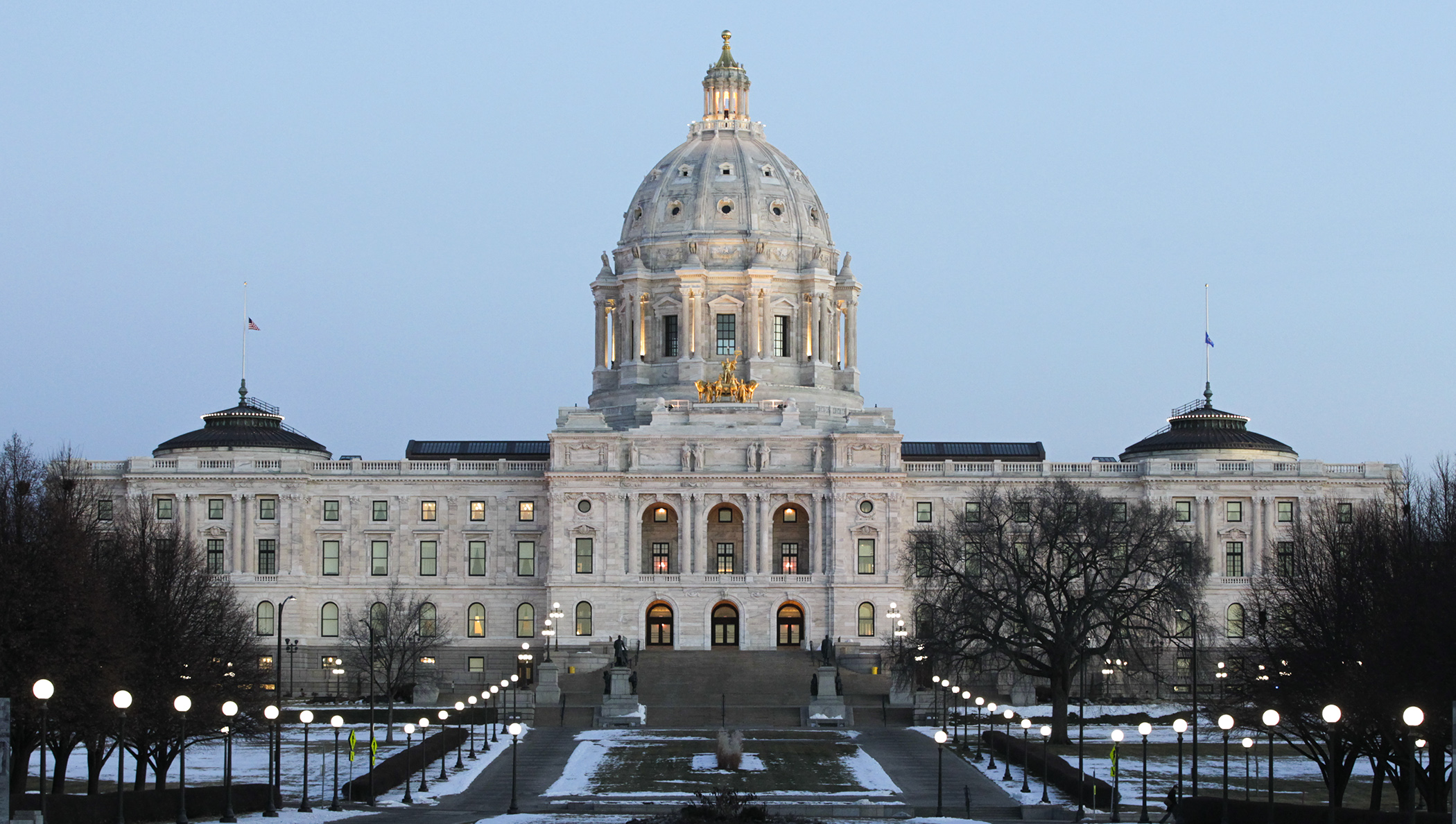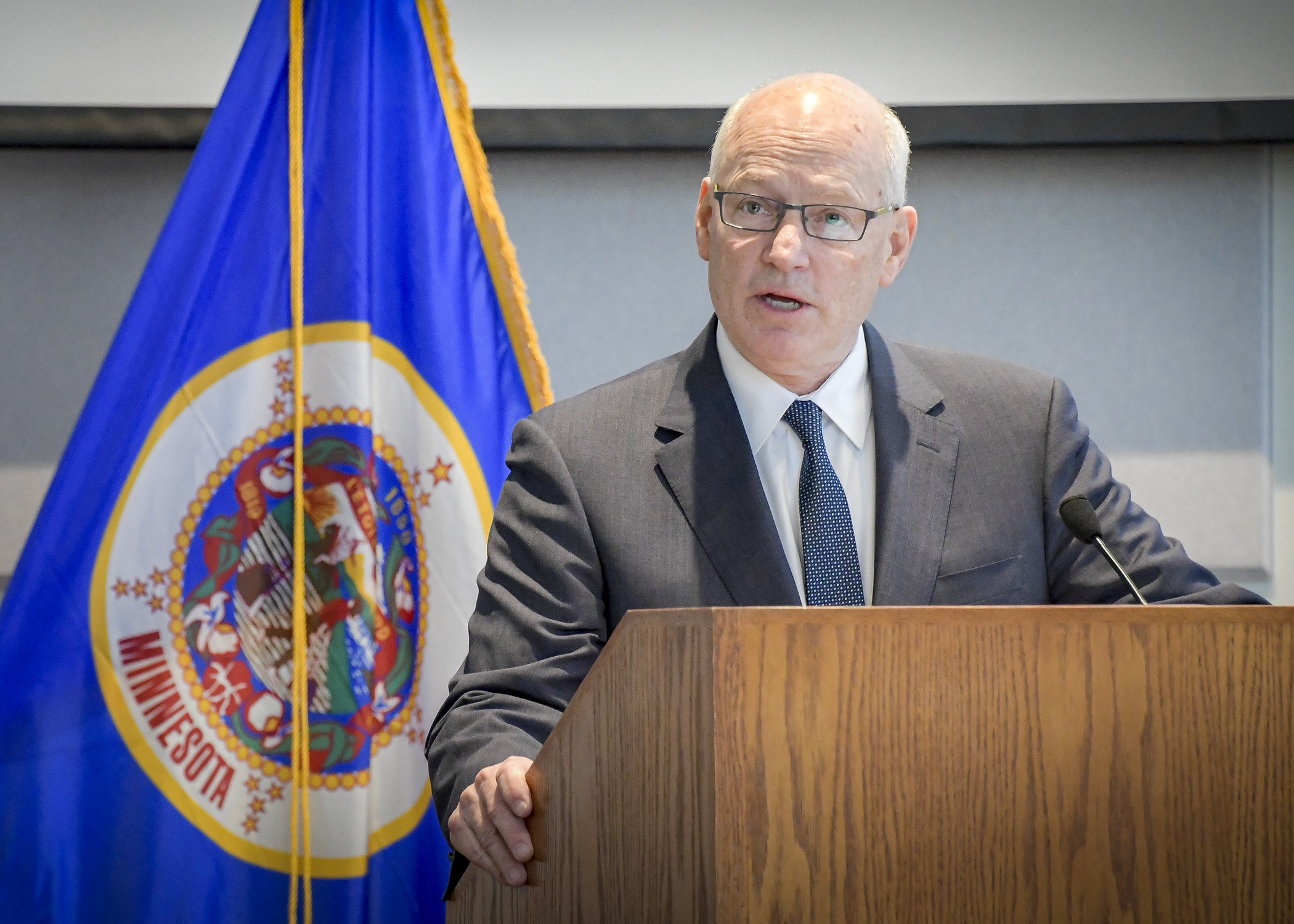New budget forecast projects $1.3 billion state surplus

(Updated 3:52 p.m.)
The first of two economic forecasts lawmakers will rely upon as they make budgeting decisions in 2020 offered upbeat news on Thursday, predicting Minnesota will have a budget surplus of $1.3 billion for the 2020-21 biennium.
Officials with Minnesota Management and Budget released the 2019 November Budget and Economic Forecast, citing an improved revenue forecast and small spending decrease as reasons for the improved economic outlook.
Commissioner Myron Frans said the forecast includes a structural balance for the next four years, when revenues are expected to exceed spending. He said it reflects economic, revenue, spending and legislative changes that have taken place over the last several months.
The forecast provides an update on the state’s financial health by looking at a variety of economic factors and trends, including spending and predicted revenues. Along with a second forecast that MMB is to release at the end of February, this data is used to inform the budgeting and policy decisions lawmakers will need to make during the 2020 legislative session, which is scheduled to begin Feb. 11.
MMB’s previous economic forecast, had projected a $1.05 billion budget surplus for the current biennium, which runs through June 2021. However, more money was carried over from the previous fiscal biennium than had been previously projected, mainly due to higher-than-expected revenues.
The budget office also increased its revenue projections for the current biennium by $501 million. Higher than expected individual income, sales and other tax revenues drove the increase, and offset a lower forecast for corporate tax revenue. Spending estimates remain largely unchanged, showing a slight decline of $7 million.
WATCH Walz responds to release of November forecast
MMB officials said individual income tax revenue is expected to increase by $493 million over the previous forecast and general sales tax revenue should rise by $252 million, while corporate tax revenue is predicted to fall by $294 million.
 Myron Frans, commissioner of Minnesota Management and Budget, presents the November Budget and Economic Forecast at a Dec. 5 news conference. Photo by Andrew VonBank
Myron Frans, commissioner of Minnesota Management and Budget, presents the November Budget and Economic Forecast at a Dec. 5 news conference. Photo by Andrew VonBankThe additional revenue also means an extra $284 million was added to the state’s budget reserve, bringing it to its statutory target level for the first time. A 2014 law calls for a portion of any budget surplus to be automatically allocated to budget reserve account, meant to be used in the event of an economic downturn.
With the additional money, the account balance now stands at $2.36 billion for the biennium, which Frans called “especially good news.”
MMB officials cited an improved outlook for economic growth nationally, with consumer spending fueling it in the near term, spurred by low interest rates and recent gains in jobs, wages and wealth. They said Minnesota’s economic performance remains “steady” with low unemployment and demand for workers supporting growth in personal wages and wage income.
But officials also urged caution.
“This forecast is an indication of Minnesota’s strong economic fundamentals,” Frans said. “But I would not be a thoughtful budget commissioner if I failed to mention that we need to be careful in planning and our decision making to ensure that we maintain budget stability going forward.”
Frans said lawmakers need to keep the budget reserve, capital investment and inflation in mind as they begin their work during the next legislative session.
Leaders weigh in
Gov. Tim Walz is pleased the forecast contains good economic news for the state.
“We can thank the people of Minnesota for that,” Walz said. “We’ve got a hardworking population of entrepreneurs who understand what it means to invest and build for the future.”
WATCH House, Senate DFL leaders respond to release of November forecast
The governor said the economy is working because the state has made smart, disciplined budgeting decisions that focus on long-term growth. He cited work done last legislative session to increase education funding, protect access to affordable health care and a middle-class tax cut as examples.
“Clearly this responsible approach to budgeting does work,” Walz said. “We’re in healthy economic position and we must protect that.”
 House Minority Leader Kurt Daudt responds to a question after the November Budget and Economic Forecast is presented at a Dec. 5 news conference. Photo by Andrew VonBank
House Minority Leader Kurt Daudt responds to a question after the November Budget and Economic Forecast is presented at a Dec. 5 news conference. Photo by Andrew VonBankBut House Majority Leader Ryan Winkler (DFL-Golden Valley) was much less rosy in his assessment of the forecast. He said that while the numbers were positive and show the economy is generating more revenue than expected, the state continues to deal with racial disparities, rising homelessness, along with unaffordable housing and health care.
“As we look at the future of this budget, we see there are great challenges ahead,” Winkler said. “In fact, because of past budget deal making under Gov. Tim Pawlenty, our surplus story is really more of a fiction and our fantasy forecast is not going to allow us to continue to invest in core services.”
Because the forecast does not factor inflation into its conclusions, Winkler said the surplus is not what it seems, and the future costs of providing the same level of services the state provides today will mean shortfalls in the years to come.
WATCH House, Senate Republican leaders respond to release of November forecast
“So the future is a budget deficit for Minnesota unless we take steps to increase revenue or start spending less on things that Minnesotans value,” Winkler said.
House Minority Leader Kurt Daudt (R-Crown) had a different perspective, saying the forecast was “great news” and showed the state had a “healthy, strong, vibrant economy.”
He said the forecast puts lawmakers in a good position to use the “extra money” to directly reduce health care costs for each Minnesotan by reducing or eliminating the “Provider Tax,” a tax on health care goods and services that raises money to help the state provide health care for those who can’t afford it.
Daudt said health care costs are the issue many Minnesotans care most about and it is bad public policy for the state to tax people’s health care. He said the forecast provides an opportunity to “correct a wrong and show Minnesotans that we listened to them in the last election, show them that we care about reducing their health care costs.”
Related Articles
Search Session Daily
Advanced Search OptionsPriority Dailies
Ways and Means Committee OKs proposed $512 million supplemental budget on party-line vote
By Mike Cook Meeting more needs or fiscal irresponsibility is one way to sum up the differences among the two parties on a supplemental spending package a year after a $72 billion state budg...
Meeting more needs or fiscal irresponsibility is one way to sum up the differences among the two parties on a supplemental spending package a year after a $72 billion state budg...
Minnesota’s projected budget surplus balloons to $3.7 billion, but fiscal pressure still looms
By Rob Hubbard Just as Minnesota has experienced a warmer winter than usual, so has the state’s budget outlook warmed over the past few months.
On Thursday, Minnesota Management and Budget...
Just as Minnesota has experienced a warmer winter than usual, so has the state’s budget outlook warmed over the past few months.
On Thursday, Minnesota Management and Budget...